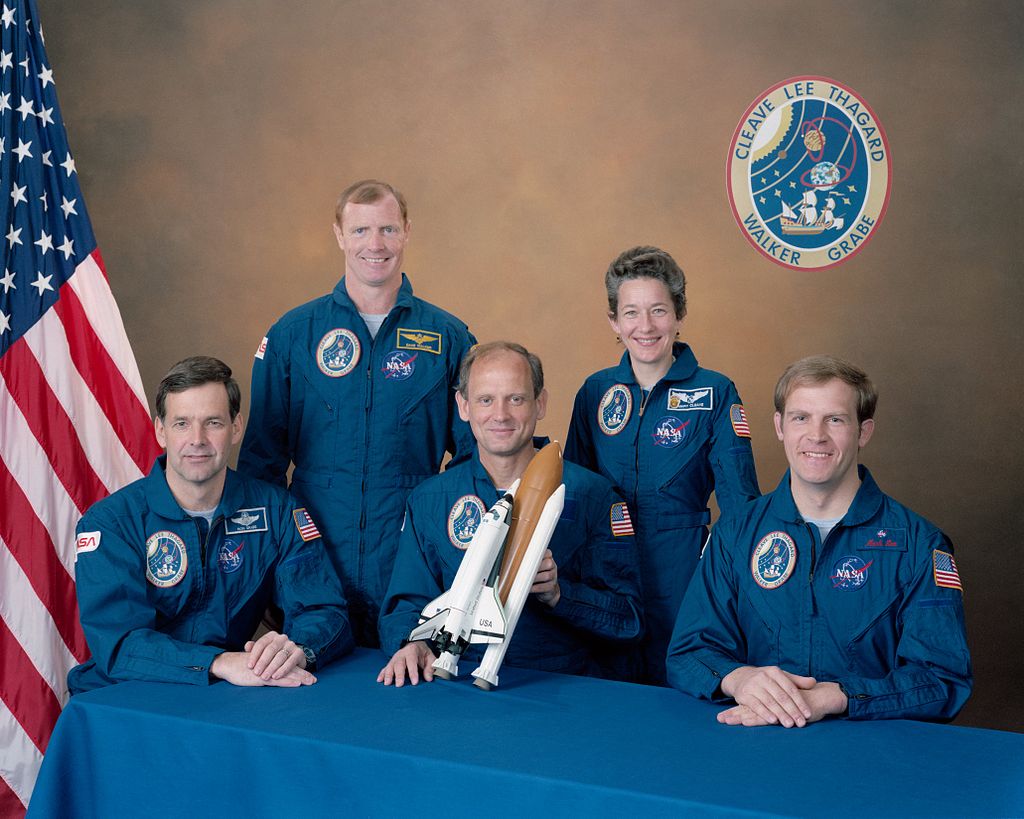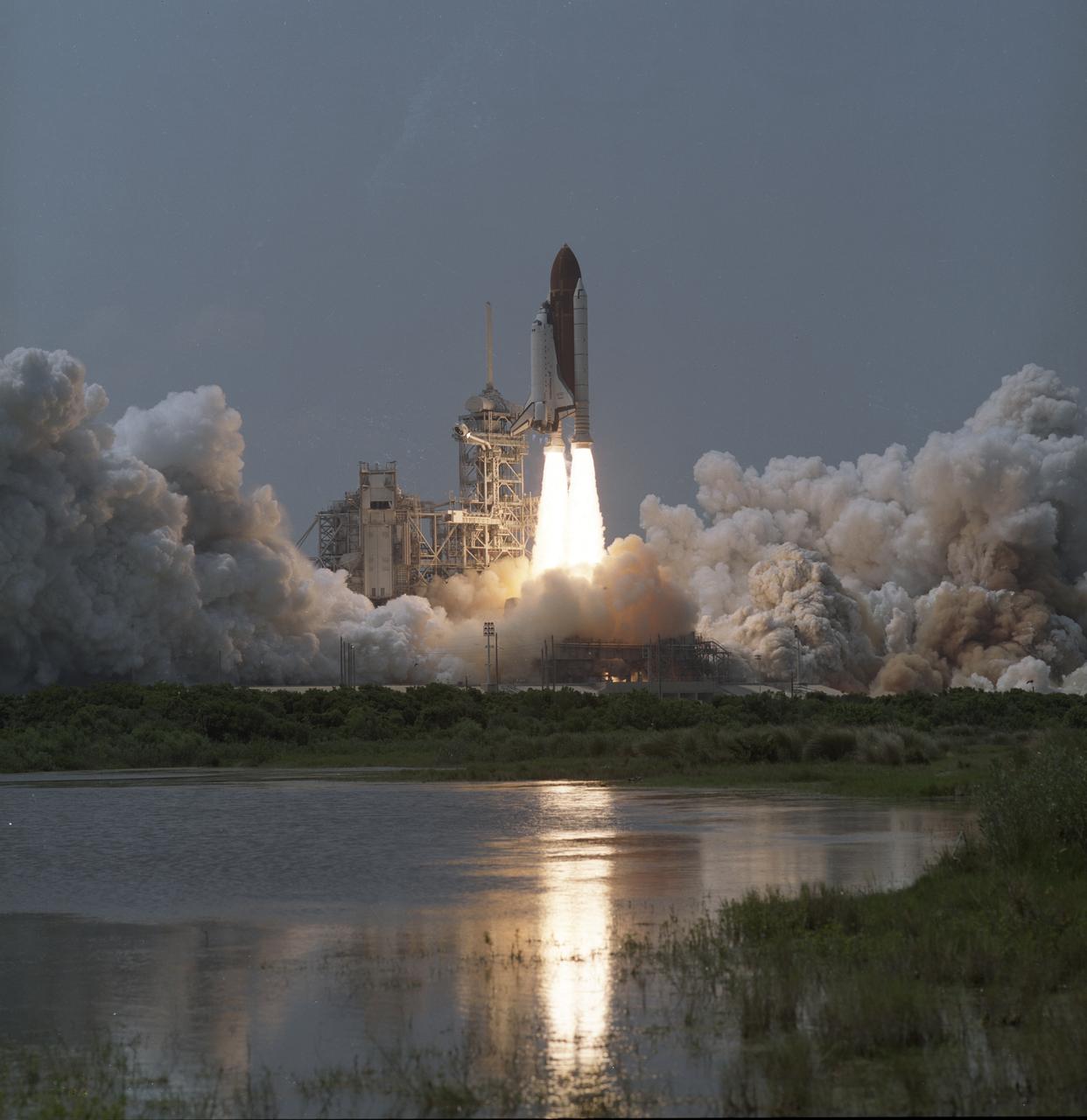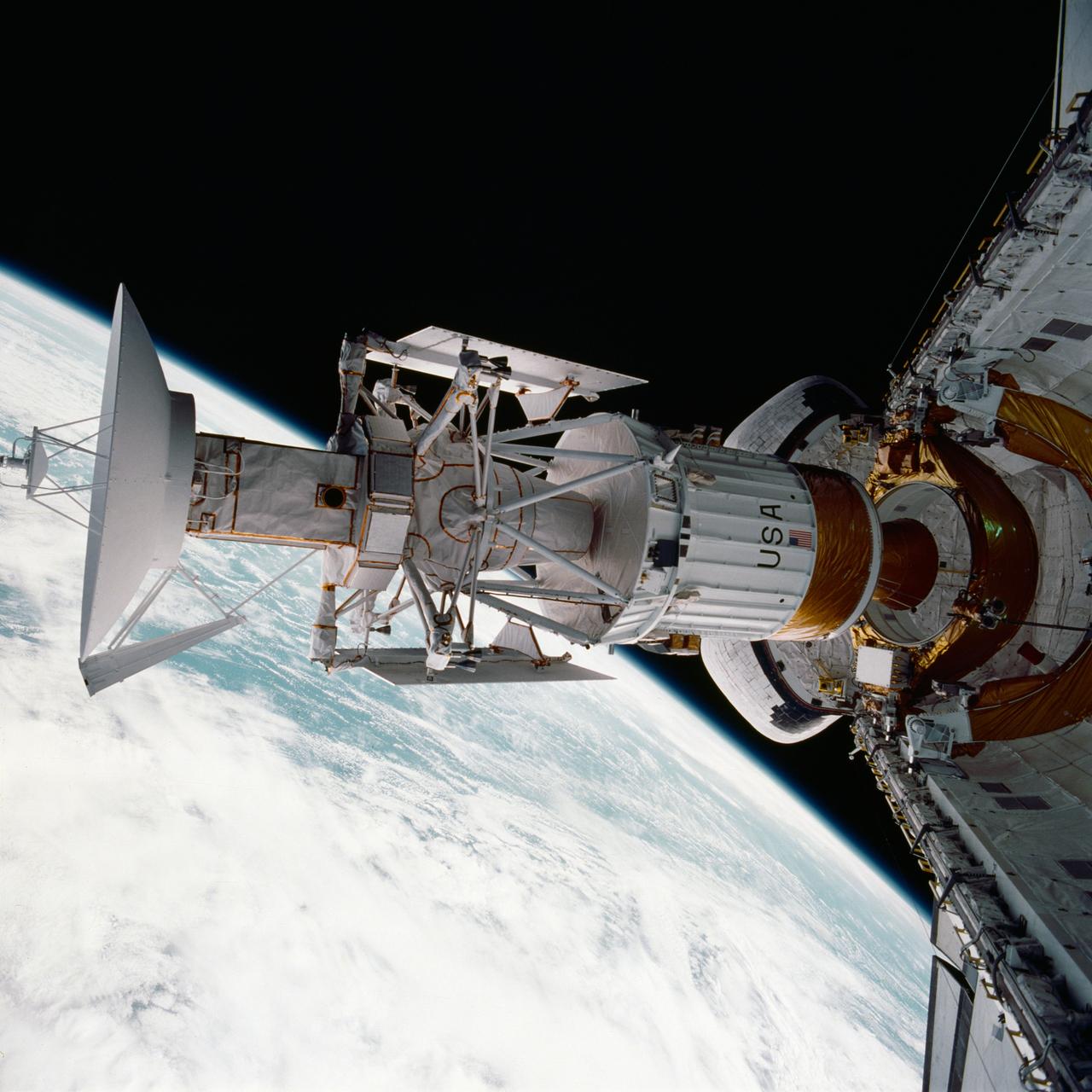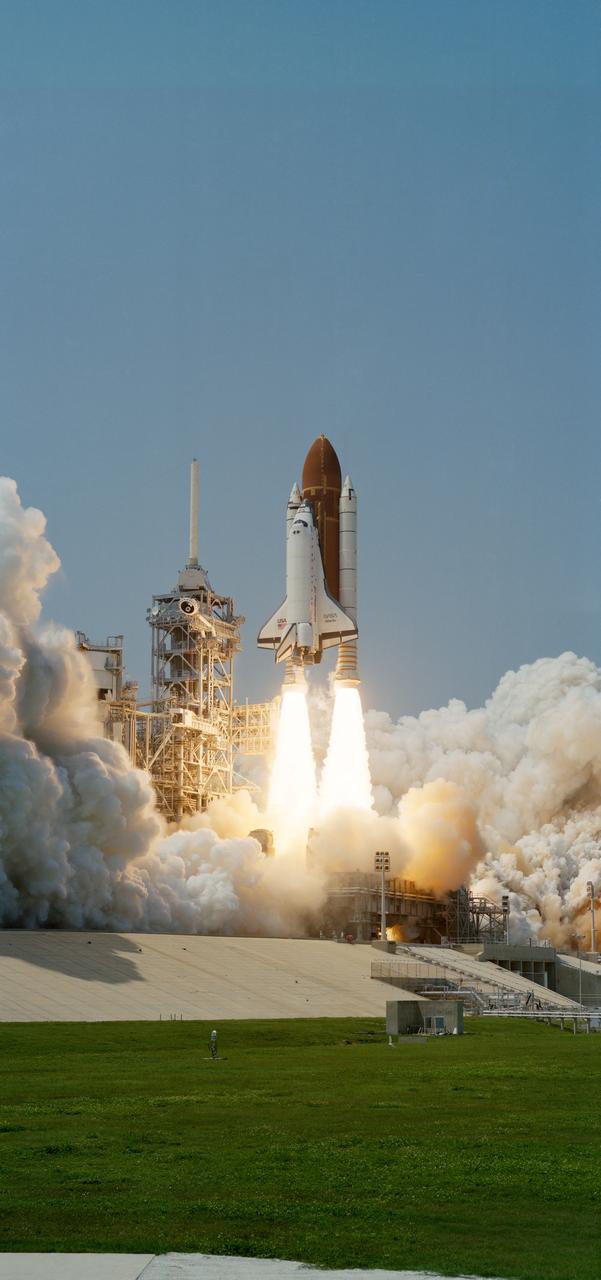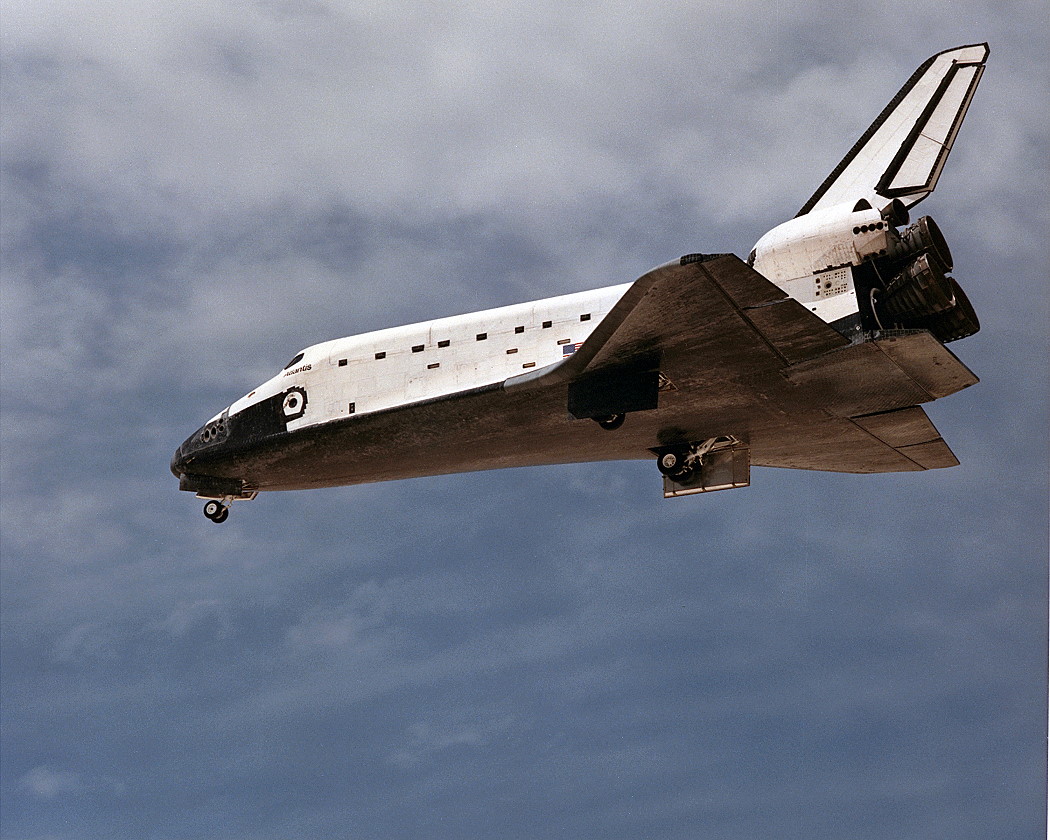STS-30 Fact Sheet
By Cliff Lethbridge

STS-30 — Atlantis
29th Space Shuttle Mission
4th Flight of Atlantis
Crew:
David M. Walker, Commander
Ronald J. Grabe, Pilot
Norman E. Thagard, Mission Specialist
Mary L. Cleave, Mission Specialist
Mark C. Lee, Mission Specialist
Orbiter Preparations:
Tow to Orbiter Processing Facility – December 14, 1988
Rollover to Vehicle Assembly Building – March 11, 1989
Rollout to Launch Pad 39B – March 22, 1989
Launch:
May 4, 1989 – 2:46:59 p.m. EDT. Launch attempt on April 28, 1989 was scrubbed at T-31 seconds due to a problem with a liquid hydrogen recirculation pump on Main Engine Number One and a vapor leak in a four-inch liquid hydrogen recirculation line located between the Shuttle and its external fuel tank.
May 4 launch was delayed 59 minutes due to cloud cover and high crosswinds at the Shuttle’s emergency landing runway at the Kennedy Space Center.
Landing:
May 8, 1989 – 12:43:26 p.m. PDT at Runway 22, Edwards Air Force Base, California. Rollout distance was 10,295 feet. Rollout time was 64 seconds. Mission duration was 4 days, 0 hours, 56 minutes, 27 seconds. Landing occurred during the 65th orbit.
Mission Summary:
The mission’s primary payload, the Magellan/Venus radar mapper spacecraft, represented the first U.S. planetary mission in 11 years. Magellan was deployed using an Inertial Upper Stage (IUS) two-stage booster, which sent the craft on a 15-month journey to Venus.
Secondary payloads included the Mesoscale Lightning Experiment (MLE), microgravity research with Fluids Experiment Apparatus (FEA) and an Air Force Maui Optical Site (AMOS) experiment similar to that flown on STS-29. One of five general purpose computers failed during the flight and was replaced using an onboard spare. This was the first time the device was replaced during in-flight operations.
SELECTED NASA PHOTOS FROM STS-30
